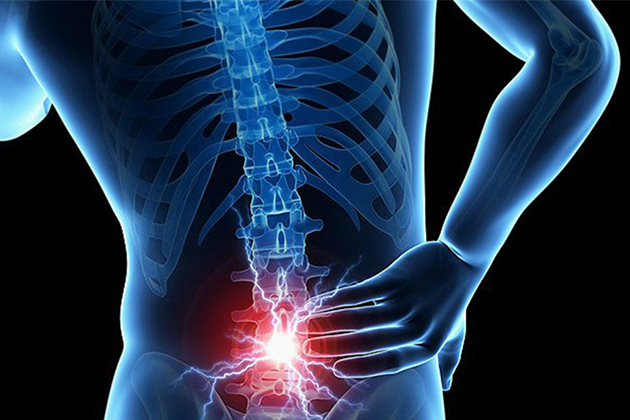
What is Lumbar Spondylolisthesis?
Spondylolisthesis is a condition where one vertebra slips forward over the one below it. This can lead to spinal instability and pressure on the nerve roots, resulting in pain and neurological symptoms.
Causes of Lumbar Spondylolisthesis
- Degenerative: Wear and tear of spinal discs and joints with aging.
- Congenital: Congenital spinal abnormalities.
- Traumatic: Accidents or sudden injuries.
- Pathological: Bone tumors or other diseases.
- Isthmic: Stress fractures in the spine.
Symptoms of Lumbar Spondylolisthesis
- Lower back and leg pain
- Numbness or tingling in the legs
- Muscle weakness
- Gait instability
- Stiffness in the back or lower back
- Increased pain when bending forward
Diagnosis and Treatment of Lumbar Spondylolisthesis
Diagnosis:
- Physical Examination: The doctor evaluates the patient’s symptoms and examines spinal movements.
- Imaging Methods: X-rays, MRI (Magnetic Resonance Imaging), and CT (Computed Tomography) scans are used to determine the degree of vertebral slippage and the pressure on the nerve roots.
Treatment:
Non-Surgical Treatment Options:
- Physical Therapy: Exercises to strengthen the spine-supporting muscles.
- Pain Relievers: NSAIDs and muscle relaxants.
- Epidural Steroid Injections: To reduce nerve root inflammation.
- Brace Use: To support the spine.
Surgical Treatment Options:
- Spinal Fusion: Fusing two or more vertebrae to stabilize the slipped vertebrae.
- Decompression: Removing part of the vertebra or discs to relieve pressure on the nerve roots.
Frequently Asked Questions
Lumbar spondylolisthesis, medically termed as ‘spondylolisthesis,’ is the slipping of one vertebra over another. It is often seen in adults as a result of the wear and tear processes associated with aging. However, in younger individuals, it can occur due to congenital spine issues or trauma. Lumbar spondylolisthesis typically occurs in the lower back region and can cause leg pain if it presses on nerves.
Muscle Weakness or Balance Issues: The uneven development or weakness of muscles can prevent vertebrae from staying in place.
Disc Degeneration: Problems in the facet joints and the isthmus part of the facet joint.
Fractures and Trauma: Fractures or traumatic injuries to the vertebrae can lead to spondylolisthesis.
Congenital Anomalies: Congenital spinal anomalies can be a cause of spondylolisthesis.
Aging: Degeneration (deterioration) of the spine with age can cause lumbar spondylolisthesis.
Genetic Factors: A family history can increase the risk of spondylolisthesis.
Back and Lower Back Pain: Lumbar spondylolisthesis can cause pain in the back or lower back, which may worsen over time.
Numbness and Tingling: Pressure on the spinal cord or nerve roots can cause numbness or tingling in the legs.
Muscle Weakness: Spondylolisthesis can lead to muscle weakness in the legs and walking difficulties.
Spinal Curvature: Progressive lumbar spondylolisthesis can cause spinal curvature (scoliosis).
Urinary and Fecal Incontinence: Rarely, it can lead to loss of bladder or bowel control.
Nerve Compression: Can cause radicular pain by pressing on the nerve roots.
Medications: Pain relievers, anti-inflammatory, or muscle relaxant medications may be prescribed.
Physical Therapy: Physiotherapists create personalized exercise programs to strengthen muscles and improve flexibility.
Exercise: Special exercise programs are implemented to increase spinal stability, reduce pain, and improve muscle strength.
Spinal Supports: Lumbar support corsets or special devices can be used.
Injection Therapies: Steroid or local anesthetic injections provide temporary relief.
Surgery: Considered when lumbar spondylolisthesis is severe, and other treatment options are ineffective. Surgery is performed to resolve nerve compressions, protect the spinal cord, and restore spinal stability.
Laminectomy: Removal of part of the bone at the back of one or more vertebrae to reduce pressure on them.
Fusion: Devices or bone grafts are used to close the gap between two vertebrae and stabilize them.
Micro-surgery: A surgical approach offering smaller incisions and faster recovery times.
The treatment of lumbar spondylolisthesis varies based on the patient’s overall condition and symptoms. The most appropriate treatment option for each patient should be determined.

